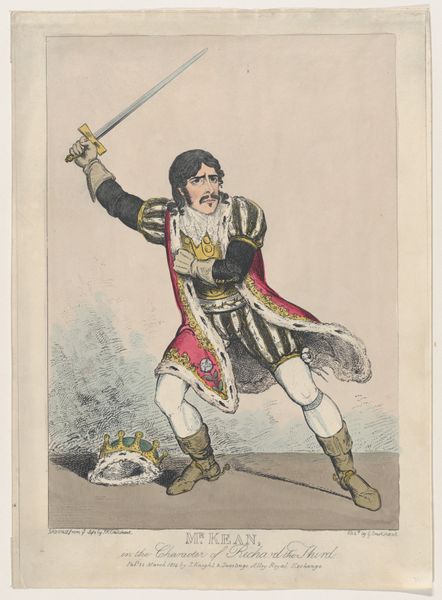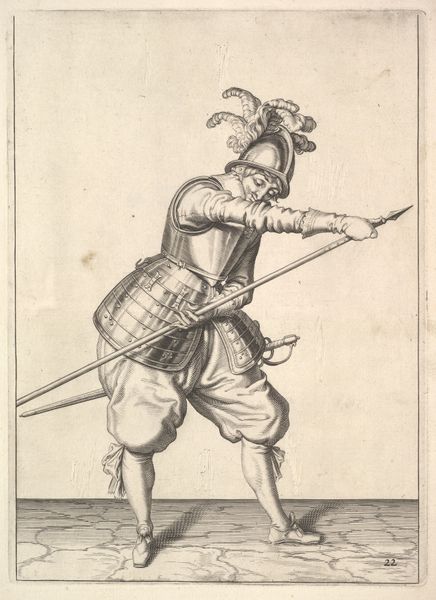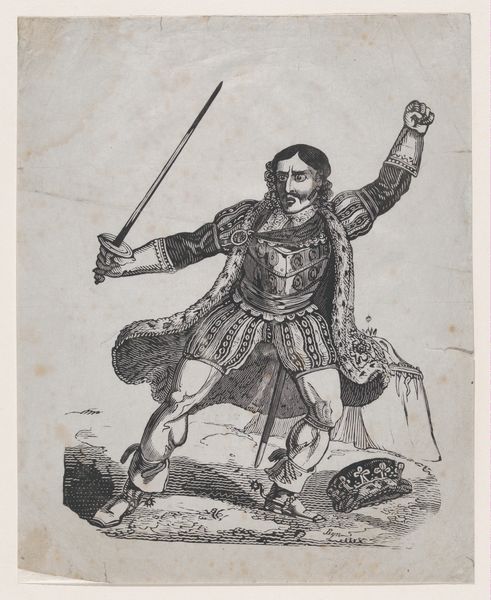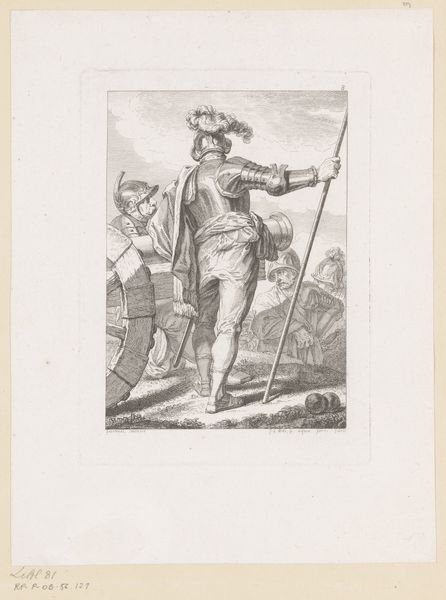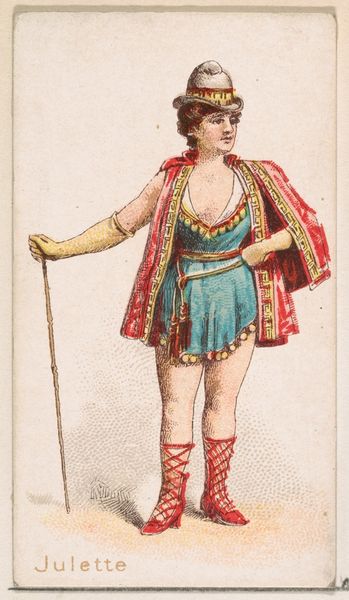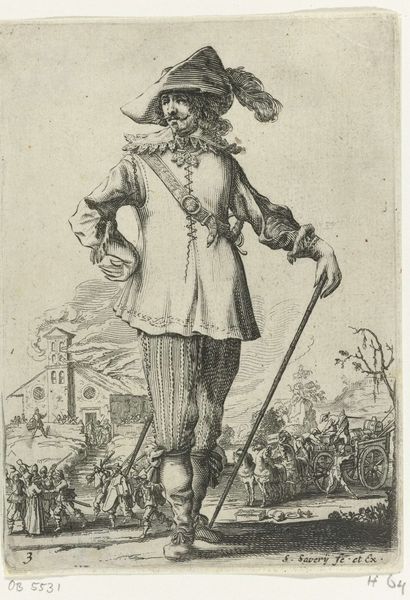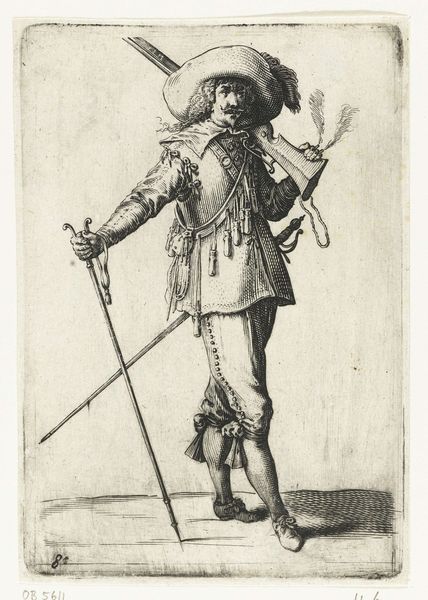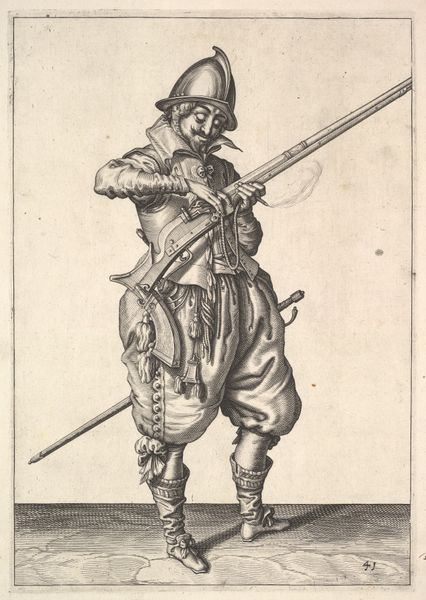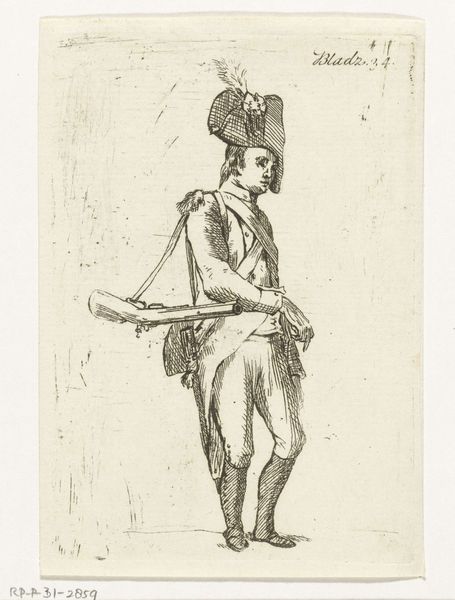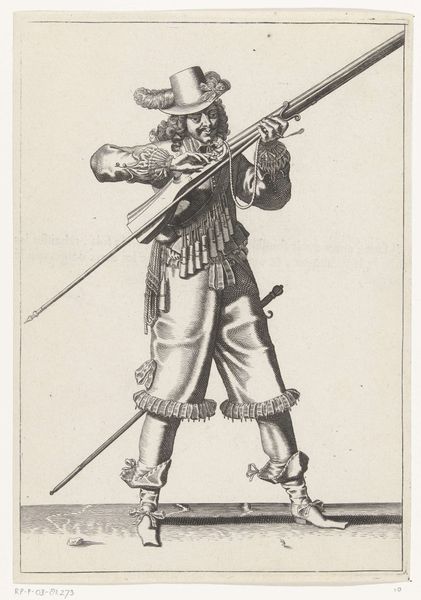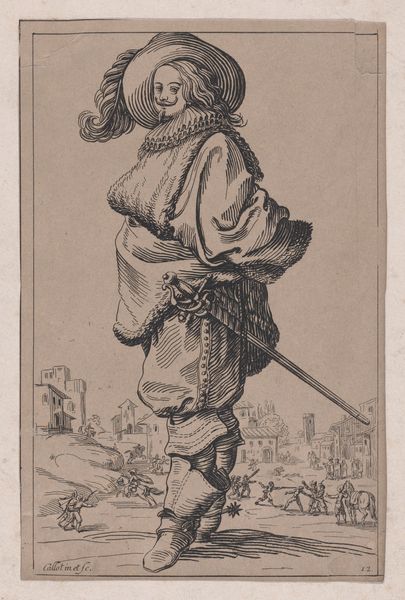
drawing, coloured-pencil, print
#
portrait
#
drawing
#
coloured-pencil
#
narrative-art
# print
#
caricature
#
caricature
#
figuration
#
coloured pencil
Dimensions: sheet: 9 15/16 x 7 3/8 in. (25.3 x 18.8 cm)
Copyright: Public Domain
Curator: This color print from 1848 is titled "Mr. Henry as Jack Straw." Editor: It strikes me as intentionally cartoonish, a large figure dominating a scene of turmoil and what appears to be rebellion. The colors are almost aggressively bright. Curator: Indeed. The print utilizes coloured pencils, which allowed for mass production of such images. These sorts of depictions would have been quite accessible at the time. And of course, as the title mentions, it is figurative in nature: "Jack Straw" may have been a reference to an historical rebellion leader. Editor: Yes, the imagery evokes several meanings. Beyond Jack Straw's Rebellion, there's a larger narrative around rebellion against authority, using the symbol of a leader, whether celebrated or ridiculed, to focus those feelings. He carries a very obvious symbolic weight in this. What are the people on the ground doing? And does that contribute to this particular meaning? Curator: I am curious about that small figure near his knee. It seems to mirror Jack Straw's garb almost mockingly. And look closely—it's a blacksmith's scene, so a kind of labor rebellion is at play here. Considering this caricature likely references a stage performance, one begins to wonder about the theatricality of labor itself. Is the work shown here honest and earnest, or more pantomime? Editor: An interesting question. The clothing design seems intended for maximum recognizability, and the very stage prop looking pole adds to the feeling of him standing in for rebellion as an idea. It would be hard to miss the mark in that outfit. This isn't so much an individualized portrayal as it is a recognizable symbol being enacted. Curator: Agreed. When viewed within the landscape of printmaking in this era, we see the democratization of the image, and along with it, a flattening of symbolism intended for wide consumption. It is quite the material shift, with far-reaching consequences to follow! Editor: It makes you think about how easily such symbols can be manipulated and repurposed, gaining traction far removed from their original intention. The human desire for an easily-grasped visual anchor endures! Curator: Very true. It gives one much to consider about artistic processes and cultural context. Editor: I'm left with the impression that some things, like the need for a face to follow, never truly change.
Comments
No comments
Be the first to comment and join the conversation on the ultimate creative platform.
